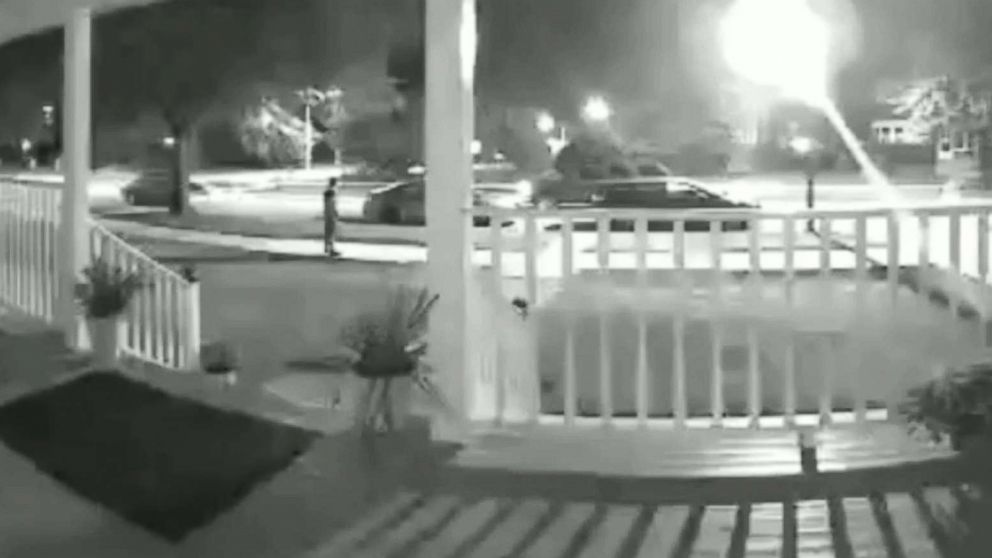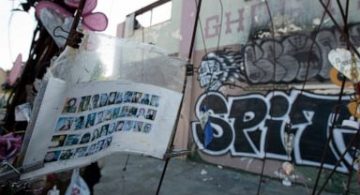
Newly released videos capturing the shooting of an unarmed developmentally disabled teenager show an off-duty Chicago police sergeant firing his gun at the young man as he appeared to be standing on a sidewalk with his arms at his sides.
The videos were released by the Civilian Office of Police Accountability on Tuesday, more than a year after Ricardo “Ricky” Hayes was shot and wounded by Sgt. Khalil Muhammad during a pre-dawn encounter.
The civilian board also released 911 calls made by Muhammad immediately after the Aug. 13, 2017, shooting on the south side of Chicago, in which the sergeant told a dispatcher: “I had to shoot.”
“Certainly we’re happy that the video is finally being released. We’re disappointed that it took so long,” Hayes’ attorney, Gabriel Hardy, told ABC News on Wednesday.
The civilian board said in a statement that the delay in making the videos and the related material public was due to concerns about the legality of releasing information related to wards of the state such as Hayes, who was 18 at the time of the shooting.
Hardy filed a federal lawsuit in August on behalf of Hayes, naming Muhammad and the city of Chicago as defendants.
“There’s no excuse for this officer shooting Ricky,” said Hardy, adding that Hayes had been harmlessly skipping along a street and singing to himself when he encountered Muhammad.
Muhammad, a member of the Chicago Police Department since 2000, has not been charged in the shooting and remains a member of the Chicago Police Department, although he has been placed on administrative leave while the case is being investigated.
The ordeal unfolded about three-and-a-half hours after Hayes, who suffers from intellectual and developmental disabilities, was reported missing from the home of his caregiver.
Muhammad had just gotten off work and was driving home in his personal car when he came upon Hayes walking on South Hermosa Avenue in the Morgan Park neighborhood just after 5 a.m., according to police.
The series of videos taken by surveillance cameras shows Hayes walking along the street and pausing at a car and in the driveway of a house. Another video shows him running in the street followed by a truck driven by Mohammad.
A video by a surveillance camera on the porch of a home shows Hayes standing on the sidewalk in front of the house as Muhammad pulls up to a stop in the middle of the street. Hayes appears to take a step toward the truck about 20 to 25 feet away from him when Muhammad, still seated in the driver’s seat of his vehicle, opened fire twice with his Glock 19 service weapon.
A wounded Hayes can be seen spinning around and running from the scene as Muhammad got out of his truck.
In a 911 call after the shooting, Muhammad told a dispatcher that he located the wounded Hayes behind Morgan Park High School and requested an ambulance. Hayes, who was shot in the arm and chest, can be heard in the 911 call screaming in pain.
“What happened?” the dispatcher asked Muhammad.
The sergeant responded that Hayes appeared to be “about to pull a gun on me, walked up to my car and I had to shoot.”
A police incident report also released by the Civilian Office of Police Accountability says Muhammad claimed he saw Hayes display a “dark object perceived to be a gun.”
“These accounts are false,” according to the lawsuit filed on behalf of Hayes.
During a news conference after the shooting, Chicago Police Superintendent Eddie Johnson told reporters that Muhammad had questioned Hayes and that the teenager became “elusive and unresponsive.”
“Officer Muhammad continued to question the man and the encounter escalated in some way which prompted the off-duty officer to discharge his weapon,” Johnson told reporters at the time.
Bill McCaffrey, a spokesman for the city of Chicago Department of Law, which has assigned an attorney to represent Muhammad in the civil case, said neither the sergeant nor the city would comment on the videos or the pending litigation.
Hardy said the video clearly shows that the shooting was unjustified.
“Ricky kept his hands at his side even when he takes a step like he’s trying to hear what the individual is saying, but he’s still quite a distance back,” Hardy said. “It’s not like he’s lunging. He’s not doing anything and the officer opens fire. Ricky didn’t raise his hand and he certainly didn’t have a gun or any type of weapon, or anything that could have remotely harmed this officer.”
While Hayes’ wounds have healed, he still suffers from emotional and psychological trauma, Hardy said.
“He’s had a really difficult time with it,” Hardy said. “He’s had to be hospitalized on multiple occasions since the shooting.”





